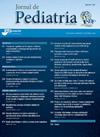阵列- cgh在疑似罕见病患儿中的诊断率。
IF 2.5
4区 医学
Q1 PEDIATRICS
引用次数: 0
摘要
目的:本研究旨在分析aCGH对小儿疑似罕见病患者的诊断率,重点分析其根据不同临床症状的诊断价值和有效性。方法:本观察性研究分析了在儿科(2018-2022)对疑似罕见病患者进行的600例aCGH检测。提取外周血DNA;根据临床特征调整aCGH分辨率。根据国际准则对CNVs进行分类。使用IBM SPSS v.26对40个社会人口学、临床和遗传变量进行分析。结果:在分析的600例患者中,543例纳入最终研究。中位年龄4.7岁(IQR: 6.36岁),66.3%为男性。大多数转诊来自儿科神经病学(84.3%),最常见的临床表现是表型改变(38.6%)、自闭症谱系障碍(38.6%)、畸形(28.2%)、整体发育迟缓(27.1%)和智力障碍(21.0%)。在543例患者中,30.4%出现CNVs,其中12.4%被确定为致病性变异,18.1%为意义不确定的变异。确诊率为12.2%,有66例结论性结果,其中90.9%为致病结果。在第15和16号染色体上最常检测到CNVs。在协调问题(35.7%)、学习障碍(28.6%)和小头畸形(22.6%)等临床特征中,发生率最高。结论:本研究aCGH的诊断率为12.2%。该检测对具有多种临床表现的患者具有较高的诊断价值,突出了aCGH作为罕见病一线诊断工具的重要性。这项技术可以早期诊断,改善临床管理,并为受影响的家庭提供更好的咨询。本文章由计算机程序翻译,如有差异,请以英文原文为准。
Diagnostic yield of array-CGH in children with suspected rare disease
Objective
This study aims to analyze the diagnostic yield of aCGH in pediatric patients with suspected rare diseases, focusing on its diagnostic value and effectiveness depending on different clinical symptoms.
Methods
This observational study analyzed 600 aCGH tests performed in a pediatric unit (2018–2022) for patients with suspected rare diseases. DNA was extracted from peripheral blood; aCGH resolution was adjusted to clinical features. CNVs were classified per international guidelines. Forty sociodemographic, clinical, and genetic variables were analyzed using IBM SPSS v.26.
Results
Of the 600 patients analyzed, 543 were included in the final study. The median age was 4.7 years (IQR: 6.36 years), and 66.3% were male. Most referrals came from pediatric neurology (84.3%), and the most common clinical manifestations were altered phenotype (38.6%), autism spectrum disorder (ASD) (38.6%), dysmorphia (28.2%), global developmental delay (GDD) (27.1%), and intellectual disability (21.0%). Among 543 patients, 30.4% presented CNVs, with 12.4% identified as pathogenic and 18.1% as variants of uncertain significance. Diagnostic yield was 12.2%, with 66 conclusive results — 90.9% of which were pathogenic. CNVs were most frequently detected on chromosomes 15 and 16. The highest yield was observed in clinical features such as coordination problems (35.7%), learning disorders (28.6%), and microcephaly (22.6%).
Conclusion
The diagnostic yield of aCGH in this study was 12.2%. The test demonstrated higher diagnostic value in patients with multiple clinical manifestations, highlighting the importance of aCGH as a first-line diagnostic tool for rare diseases. This technique enables earlier diagnosis, improves clinical management, and provides better counseling for affected families.
求助全文
通过发布文献求助,成功后即可免费获取论文全文。
去求助
来源期刊

Jornal de pediatria
医学-小儿科
CiteScore
5.60
自引率
3.00%
发文量
93
审稿时长
43 days
期刊介绍:
Jornal de Pediatria is a bimonthly publication of the Brazilian Society of Pediatrics (Sociedade Brasileira de Pediatria, SBP). It has been published without interruption since 1934. Jornal de Pediatria publishes original articles and review articles covering various areas in the field of pediatrics. By publishing relevant scientific contributions, Jornal de Pediatria aims at improving the standards of pediatrics and of the healthcare provided for children and adolescents in general, as well to foster debate about health.
 求助内容:
求助内容: 应助结果提醒方式:
应助结果提醒方式:


